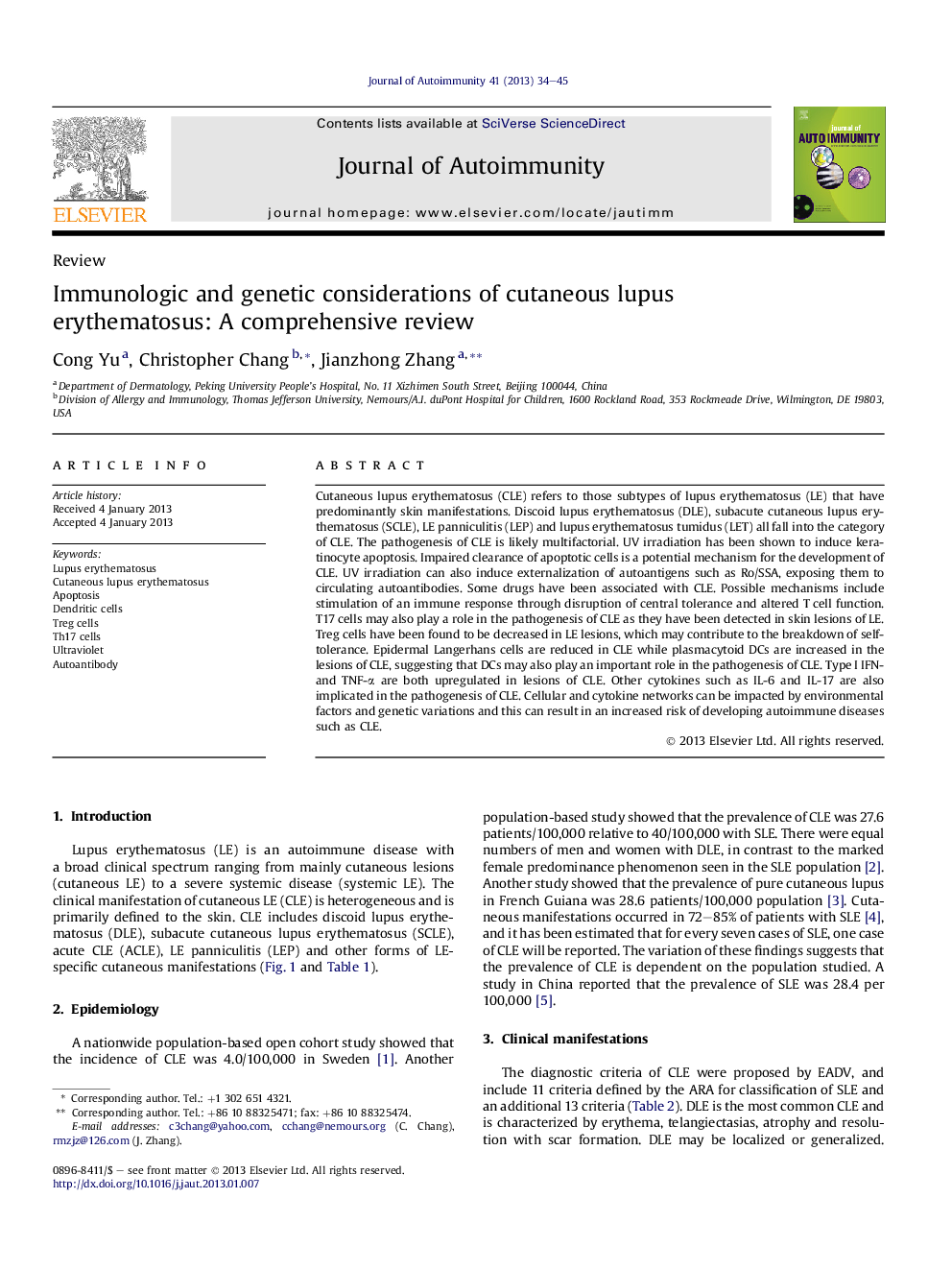| Article ID | Journal | Published Year | Pages | File Type |
|---|---|---|---|---|
| 3367896 | Journal of Autoimmunity | 2013 | 12 Pages |
Cutaneous lupus erythematosus (CLE) refers to those subtypes of lupus erythematosus (LE) that have predominantly skin manifestations. Discoid lupus erythematosus (DLE), subacute cutaneous lupus erythematosus (SCLE), LE panniculitis (LEP) and lupus erythematosus tumidus (LET) all fall into the category of CLE. The pathogenesis of CLE is likely multifactorial. UV irradiation has been shown to induce keratinocyte apoptosis. Impaired clearance of apoptotic cells is a potential mechanism for the development of CLE. UV irradiation can also induce externalization of autoantigens such as Ro/SSA, exposing them to circulating autoantibodies. Some drugs have been associated with CLE. Possible mechanisms include stimulation of an immune response through disruption of central tolerance and altered T cell function. T17 cells may also play a role in the pathogenesis of CLE as they have been detected in skin lesions of LE. Treg cells have been found to be decreased in LE lesions, which may contribute to the breakdown of self-tolerance. Epidermal Langerhans cells are reduced in CLE while plasmacytoid DCs are increased in the lesions of CLE, suggesting that DCs may also play an important role in the pathogenesis of CLE. Type I IFN- and TNF-α are both upregulated in lesions of CLE. Other cytokines such as IL-6 and IL-17 are also implicated in the pathogenesis of CLE. Cellular and cytokine networks can be impacted by environmental factors and genetic variations and this can result in an increased risk of developing autoimmune diseases such as CLE.
► Cutaneous lupus includes DLE, DDLE, SCLE, LET, LEP and neonatal lupus. ► The pathogenesis of CLE is likely multifactorial. ► UV irradiation has been shown to induce keratinocyte apoptosis. ► T17 and dendritic cells may also play a role in the pathogenesis of CLE.
